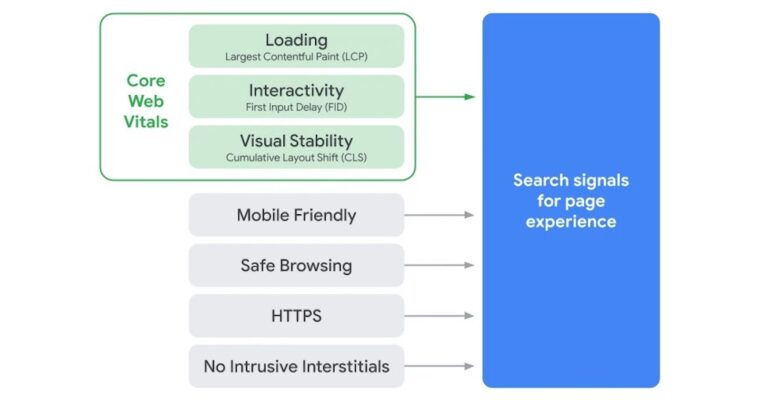What Are Google Core Web Vitals?
In early May 2020, Google announced the arrival of Core Web Vitals, introducing the world to three acronyms: LCP, FID and CLS. This was Google’s way of saying that UX (user experience) is going to become more and more essential, and that it makes it less and less forgivable for websites to deliver poor user experiences. Compliance is essential for businesses that want to maintain good ranking in search results.
Core web vitals are a set of metrics that Google is rolling out. They were created to specifically examine the user experience on a web page. They are:
- Largest Contentful Paint
- First Input Delay
- Cumulative Layout Shift
Other web vitals include:
- Mobile-Friendly
- Safe Browsing
- HTTPS
- No Intrusive Interstitials
But, as the name suggests, core web values will carry a lot of weight with Google in terms of SEO and ranking. Here’s a brief explanation of each:
Page loading performance — Largest Contentful Paint (LCP)
This is simply the average loading time for your main content on the page. Content must load in under 2.5 seconds to meet the user experience standards Google has set.
Aside from the Google aspect, visitors lose patience quickly and will leave your site if it takes too long to load. This is why it matters.
Ease of Interaction — First Input Delay (FID)
This measures how long it takes from when a user inputs an action to when the page actually executes it. So, how long does it take something to happen after the user clicks your call to action?
The longer this takes (and it is measured in milliseconds), the greater the negative impact. And when we refer to negative impact, we mean that it will impact your SEO performance. It could be the difference between 1st and 2nd page SERP (search engine results performance). This is why it matters.
Visual Stability of a page from a user’s perspective — Cumulative Layout Shift (CLS)
Bear with us. Have you ever loaded a page, thought it was done loading, went to click, and then everything moved again? This would be a site with a high CLS score, and that is a negative result, lower CLS scores are favored.
Frustration with a site leads to lost traffic. If your site shifts, users can wind up clicking on the wrong thing. Eventually they will click to a different site. Low CLS score means a better user experience and improves overall SEO performance. This is why it matters.
Measurement
These are relatively simple things. However, Google has made them measurable and established benchmarks for what counts as poor, needs improvement and good on one’s website. Armed with this knowledge, businesses can make smart decisions about what’s important to them and their customer relationships.
To help navigate all this new data, there’s now a Core Web Vitals section in your business Search Console in the Experience section of the menu. It helps you to split by device, analyze your site’s performance and offers suggestions on the measures you can take to improve it.
A Greater Emphasis on Privacy
Along with these new measurements, Google is becoming more and more concerned with user privacy. It may seem counterproductive that a company in the ad business would throw in roadblocks for the ways advertisers track their ads, but as they stated on their Ads and Commerce Blog:
“Developing strong relationships with customers has always been critical for brands to build a successful business, and this becomes even more vital in a privacy-first world. We will continue to support first-party relationships on our ad platforms for partners, in which they have direct connections with their own customers. And we’ll deepen our support for solutions that build on these direct relationships between consumers and the brands and publishers they engage with.
“Keeping the internet open and accessible for everyone requires all of us to do more to protect privacy — and that means an end to not only third-party cookies, but also any technology used for tracking individual people as they browse the web. We remain committed to preserving a vibrant and open ecosystem where people can access a broad range of ad-supported content with confidence that their privacy and choices are respected. We look forward to working with others in the industry on the path forward.“
In summary, Google has always concerned with the user experience, and that is why CWV has been on the horizon. Implementation began last month and should be completed in August. We’ve been updating our Concierge Clients since the beginning of the year as the details became clearer. If you have questions, email us today!








